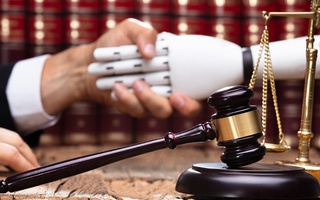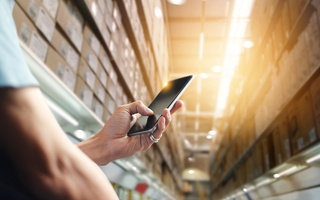With the change of the usual way of life, the competition between retailers has become fiercer, and it has become harder to make a profit. However, some breathing space still remains. It is only necessary to find the right development vector based on modern technology solutions. We invite you to consider and discuss the current methods of driving profit in retail trade powered by CRM: personalization, customer retention, end-to-end analytics, and loyalty programs.
In the last 3 years, many customers and retail areas have gone online—mostly because of the pandemic. Data Insight experts predict that for at least all of 2021, consumers will shop online instead of visiting trade malls. In this regard, the most important trend for retailers has become the need to retain customers by communicating with them through all channels of communication (omnichannel approach), offering great customer experience, remarketing, and end-to-end analysis. Retailers can use CRM systems to facilitate the achievement of these goals.
Personalization
The report by Accenture shows that 75% of customers prefer to buy from a salesperson who calls them by name, recommends an item based on previous purchases, or knows their purchase history. Obviously enough, the absence of such personalization tools will make investments in marketing, newsletters, and advertising campaigns ineffective.
Therefore, the businesses have to reveal the customer need to tailor individual content for them. They can do this with a separate CRM tool that enables offer targeting and personalization.
Such a module segments customers by contact data and demographic characteristics and analyzes in-store and online customer behavior. It generates mass newsletters through different channels (e-mail, PUSH notifications, messengers, and SMS); it should be noted that you can either interact with the customer when certain events are triggered or configure a cascade communication cycle. Based on the activities results, the tool extracts the statistics from CRM on the results of the campaign for specific newsletters and events to identify the campaign efficiency. In the end, personalization is needed to make an interesting and advantageous offer for the consumer and drive purchases. The personalization module is seamlessly integrated with loyalty programs, which we will tell you about later.
Customer retention
After making a personal offer to a customer and encouraging them to do something, you will have to make them remain without instead of leaving to competitors.
The research among 8,000 consumers in the U.S. and European markets conducted by Accenture revealed that 91% of respondents prefer brands that remember them, recognize them, and provide relevant suggestions and recommendations. Of course, we all have our favorite stores and brands—we read their newsletters and we are always pleased if they offer us a product that we have recently been interested in (especially if there is a promo for it!).
Therefore, a retail representative needs to make a relevant offer to retain the customer. But how to deliver this message? This is another area where CRM can help you—it will engineer a loyalty program in such a way as to encourage the customer to make more and more purchases.
It will help you create and manage your member database, keep cards and accounts, track transactions, offer discount points, coupons, certificates, and understand how your customers use them. CRM enables you to customize numerous loyalty management mechanics to encourage your suppliers and partners.
End-to-end analytics
When much has already been done for offer personalization and customer retention, it's time to understand the overall efficiency. For this purpose, you need end-to-end analytics.
Many companies practice a siloed approach with patchwork integration of marketing and customer relationship technologies. This means that the retailer is unable to see a clear relationship between the marketing and sales processes. The downside here is that it also lacks an understanding of the sales funnel structure, from the moment of attracting a lead to a purchase.
To get a clearer picture, you need to master end-to-end analytics, from the moment when a customer is attracted and comes into the store to identifying the store and calculating conversion, and ending with tracking next deals in the view of cross-sales and loyalty programs.
CRM system usually provides a number of analytical tools that allow you to collect all the statistics from different sources (personal accounts, mobile applications, online stores) in one picture. These statistics include customer segmentation and customer flow analysis, transaction reporting, sales dynamics, as well as more specific parameters, such as popular product combinations. The tool also helps detect fraud.
Loyalty programs
The Rosetta Consulting agency estimated that customers who participate in loyalty programs of a particular brand are 90% more likely to buy its products and spend 2 to 3 times more than customers external.
Such solutions are not just a tool, but a strategic mechanism for customer retention. This concept covers all customer journey milestones: customer identification, behavior analysis, change modeling (or, in simple words, the effect of making a personalized offer based on relevant statistics, historical data, and customer purchases), creation of a personalized offer and its delivery, result analysis and offer adjustment.
Let's take a look at loyalty programs implemented for Softline customers, which brought tangible results.
Case No.1: Federal chain of children's stores
As of 2019, the chain had 5 million loyalty program members. If we compare the year-to-year statistics for 2017-2018, binary segmentation shows that about 1 million customers (-21.7%) became less prone to churn, 4.1% of customers became more active, and RFM segmentation shows that the customer churn was decreased by 12.3%.
Case No.2: Fashion retail chain
In 2019, 1 million consumers participated in the program. Of that number, about 200,000 people became more active (+19.6%) in their behavior and purchases, the customer churn decreased by 8.9% according to RFM, and binary segmentation showed a 16% decrease in the number of customers prone to churn.
Case No.3: Federal chain of grocery supermarkets
The loyalty program reached over 3 million people (2019). After implementing the loyalty program, the number of checks per month increased by 60%, turnover by checks increased by 16%, and the check depth increased by 22%.
More and more retailers realize that a personalized approach to a customer, their retention, and behavior analysis today is not an additional function, but a competitive edge and even a must-have for survival. Softline advises you not to wait for the customers to churn. Start implementing a CRM system today, because, in our opinion, this is the best fix for the current challenges of retail businesses.










